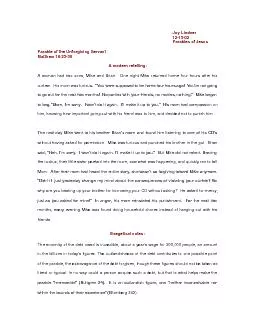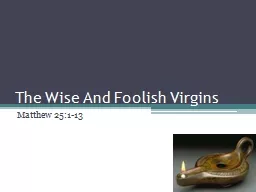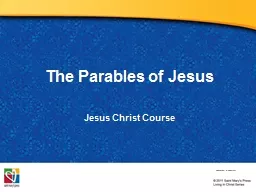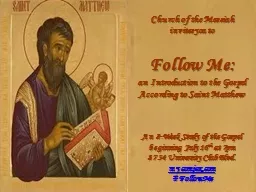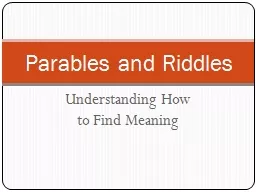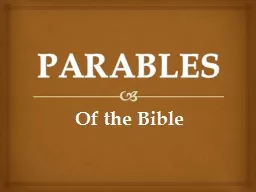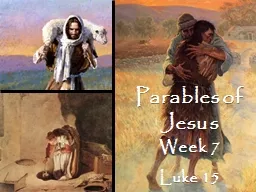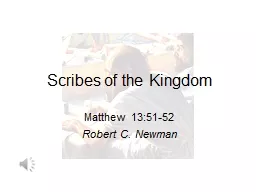PDF-Parables of Jesus
Author : trish-goza | Published Date : 2015-11-25
Joy Lindner 12 13 02 Parable of the Unforgiving Servant Matthew 1823 35 A modern retelling A woman had two sons Mike and Brian One night Mike returned home four
Presentation Embed Code
Download Presentation
Download Presentation The PPT/PDF document "Parables of Jesus" is the property of its rightful owner. Permission is granted to download and print the materials on this website for personal, non-commercial use only, and to display it on your personal computer provided you do not modify the materials and that you retain all copyright notices contained in the materials. By downloading content from our website, you accept the terms of this agreement.
Parables of Jesus: Transcript
Download Rules Of Document
"Parables of Jesus"The content belongs to its owner. You may download and print it for personal use, without modification, and keep all copyright notices. By downloading, you agree to these terms.
Related Documents

